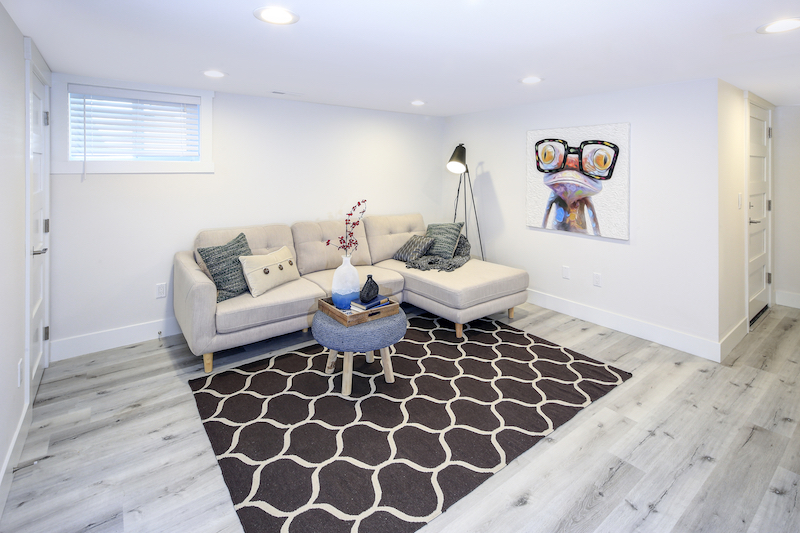Whether you’re finishing your bare-bones basement or just renovating a small portion, choosing the right flooring for your space is usually a difficult decision. Basements floors typically need to be more durable than floors you might consider for your kitchen or dining room. Materials like hardwood, laminate and linoleum are out of the question if there’s any risk of dampness or flooding. Although those popular options might be off the table, there are a number of great materials that will work in any basement. Read on to find out the best flooring options for your basement.
1. Engineered Wood Flooring
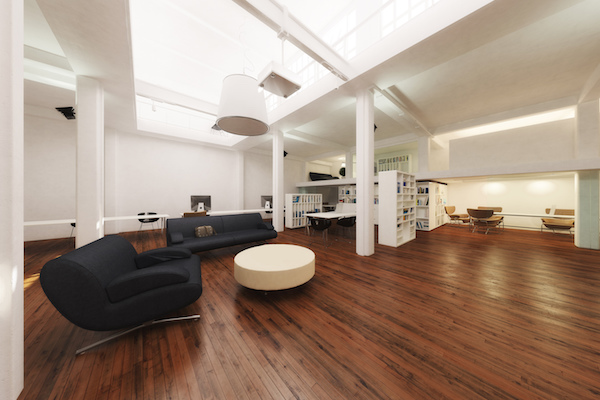
Engineered hardwood is a fantastic hardwood alternative for rooms susceptible to fluctuations in temperature and humidity. Engineered hardwood is created by pressure bonding a top layer of dried out hardwood with a base made of plywood, high-density fiberboard (HDF) or solid wood. This process creates a material that looks very similar to hardwood but is significantly more durable.
There are a few different ways to install engineered hardwood, meaning you’re unlikely to run into complications no matter the state of your basement. That being said, this combination of aesthetics and durability doesn’t come cheap – engineered hardwood will usually cost more than hardwood. It will also require a subfloor, adding to the cost of installation. Given the price, you’ll want to hire an expert for installation to ensure everything gets done right.
2. Engineered/Luxury Vinyl Plank or Tile
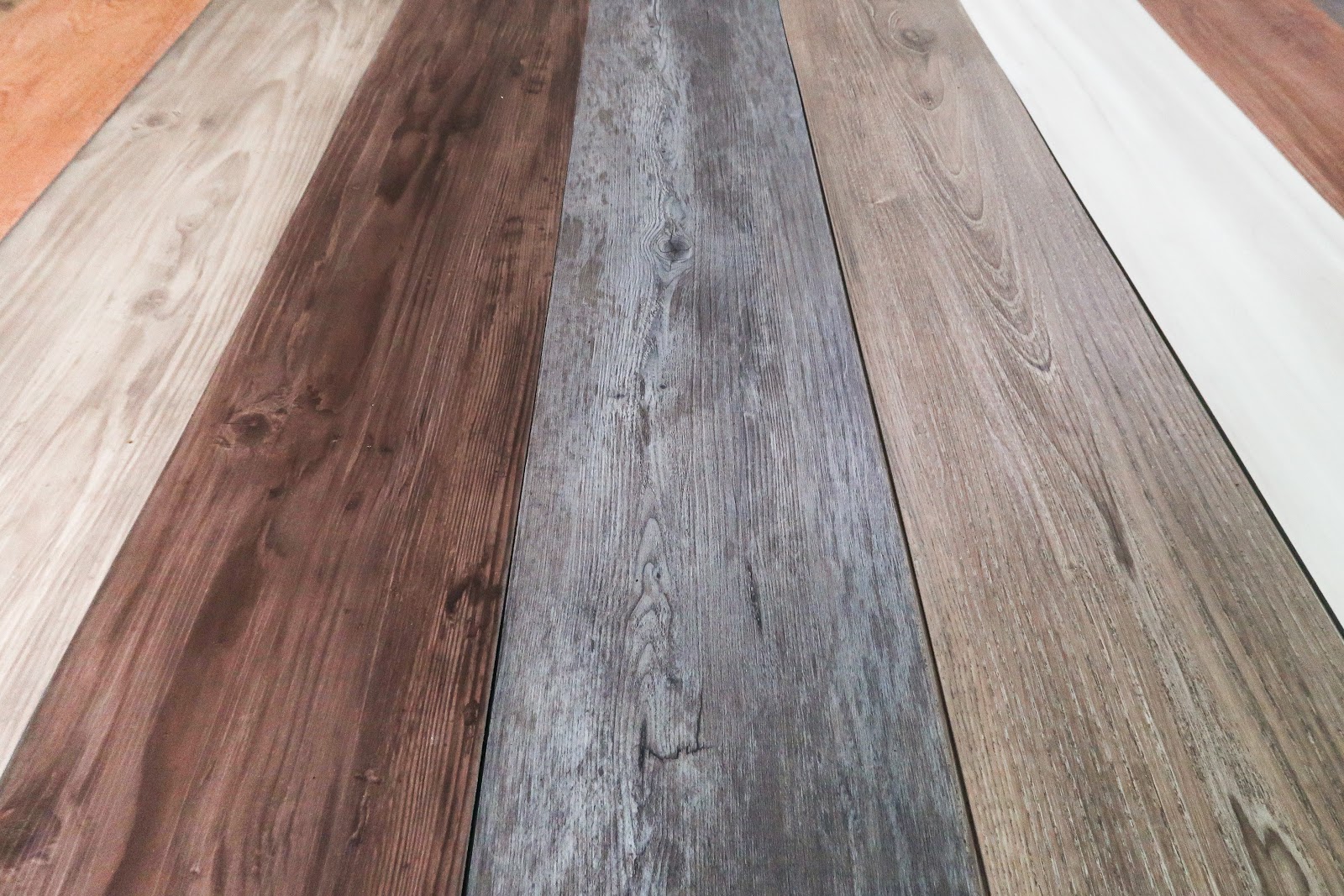
In the past, some homeowners were wary of vinyl floors and their dated designs. These days, not only does vinyl come in a variety of shapes and patterns, but most retailers carry tiles that closely resemble hardwood and stone. These higher-end vinyl products are called Luxury Vinyl Flooring, or LVF, and are often compared to laminate flooring.
Like laminate, LVF uses high-quality photos to imitate more expensive natural materials. However, unlike laminate, vinyl floors are well-suited for damp areas of the home like bathrooms, laundry rooms and, of course, basements. It’s also worth noting that the added layers in LVF make this option somewhat warmer than tile or sheet flooring. However, while a cork subfloor is not required, you’ll need to add a vapour barrier to prevent moisture from getting trapped between the concrete and the boards.
Vinyl floors can cost anywhere between one to ten dollars per square foot, so we recommend asking a pro about the best product for your budget.
3. Ceramic or Porcelain Tile Flooring
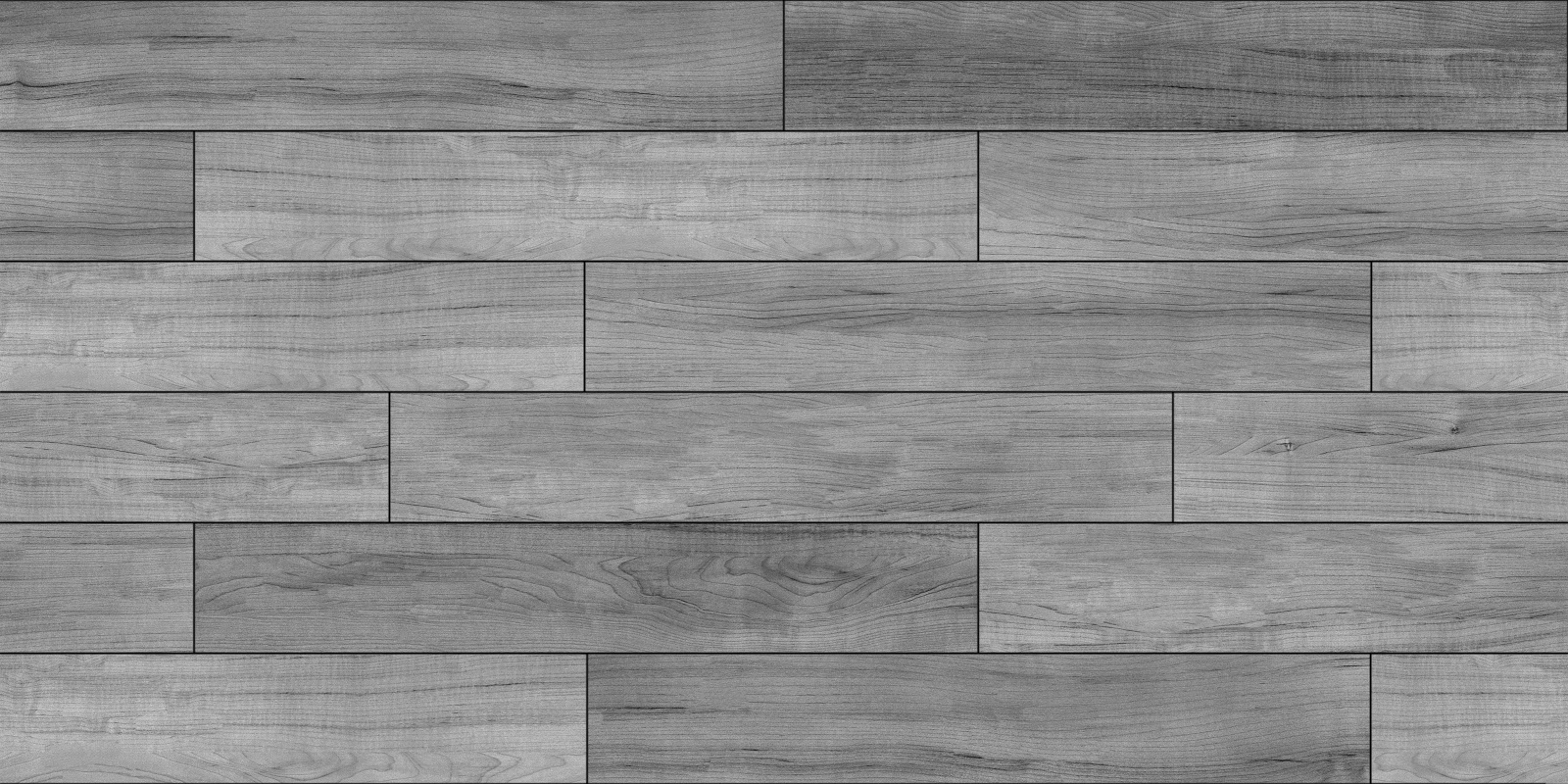
Generally speaking, inorganic materials are better suited for basements than organic counterparts. Inorganic materials, like tile, will not grow mold or rot when subject to moisture (which is likely in a basement). If your basement is prone to flooding but you’re still hoping for hardwood, you’re in luck. Manufacturers have started retailing tile plank floors cut to mimic the look of hardwood. This option will give you the look you’re going for with all the practical benefits of tile.
As an added bonus, tile can be installed directly on top of your existing concrete floor as long as it is level. The downfall of this option is that without the addition of radiant flooring or installation, tile will usually be cold to the touch and will not absorb sound.
4. Carpet
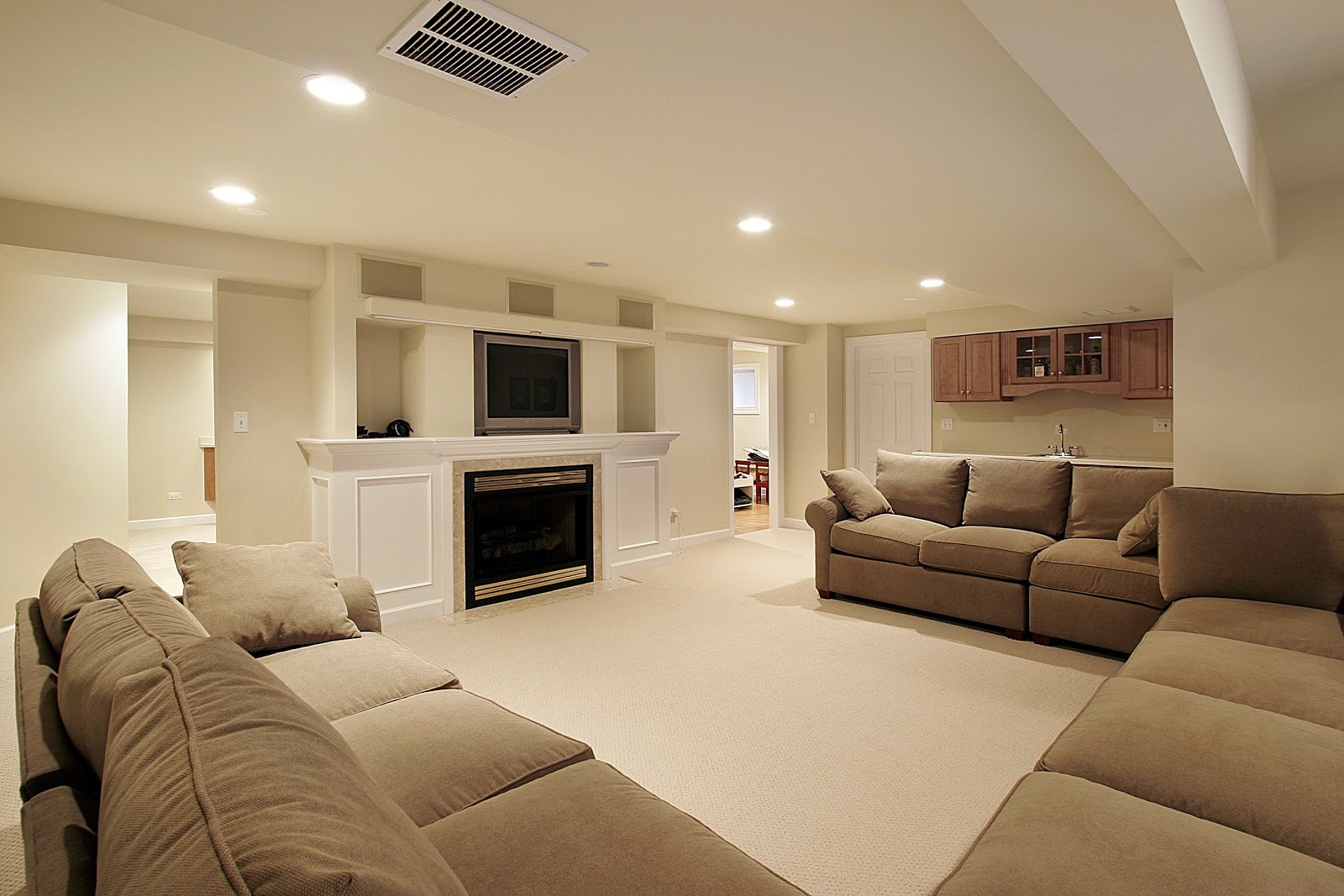
Carpeting is warm, cozy, and great for kids. Aesthetically speaking, there’s no better material for creating a warm and inviting basement. Practically speaking, it’s not quite as durable as harder alternatives. However, with the addition of a raised subfloor, you can vastly improve your carpet’s longevity.
In the event of a flood or leak, carpeting can be dried out with the help of industrial equipment. You’ll need to act fast — if left too long, carpeting will start to grow mold. Some carpets are made with built-in moisture barriers, so consult with a pro to determine which options will work for your space.
5. Concrete
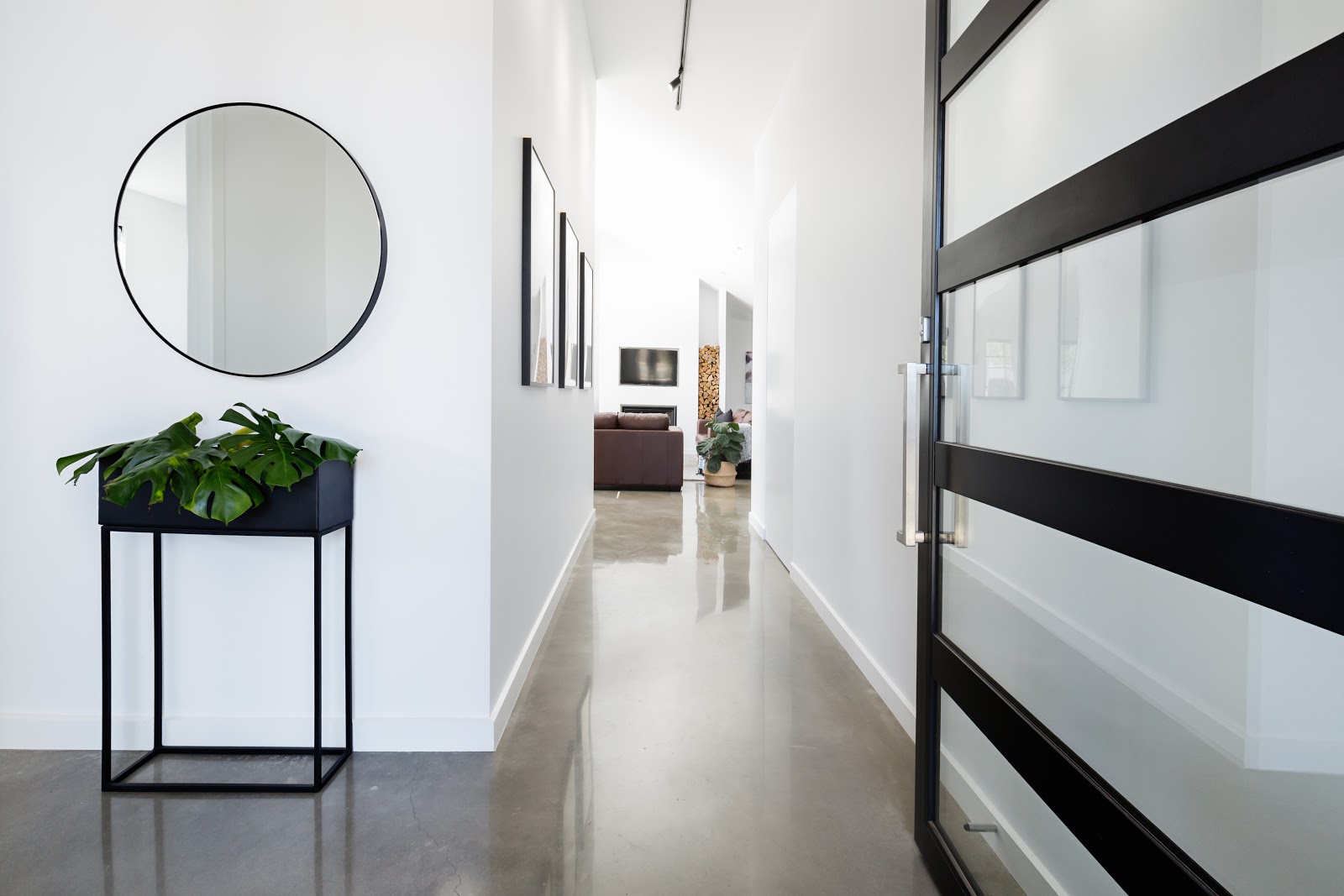
Practically speaking, concrete outperforms many of the options mentioned above. Not only is concrete inorganic, but it also consists of one single layer. That means there’s much less opportunity for moisture to get trapped somewhere in its core. Similarly, a concrete floor does not require the installation of a subfloor, making installation somewhat more efficient. That being said, a concrete floor is impossible to heat from below, echoes and is difficult to paint or polish. If you’re looking for a durable and usually inexpensive option, concrete is the floor for you.
Although these options work for most basements, we recommend consulting with a pro before making any big commitments. You’ll want to be aware of any issues you may face down the line with moisture, flooding or humidity before selecting a material. When you’re ready to start your project, connect with a pro on HomeStars and get ready to enjoy your new living space.
Post updated November 15, 2019.
